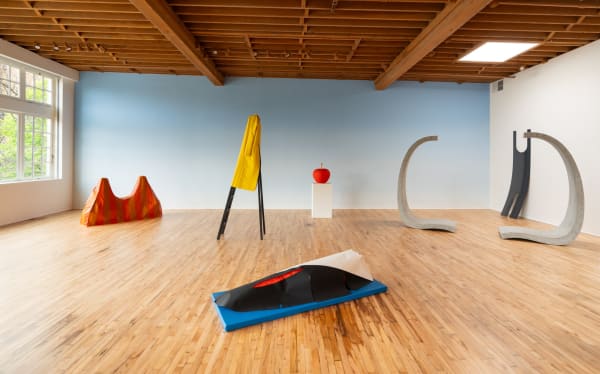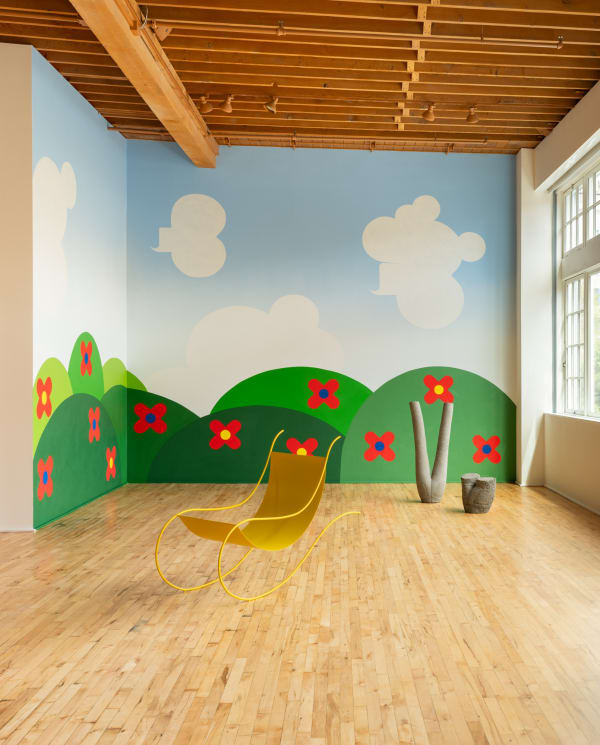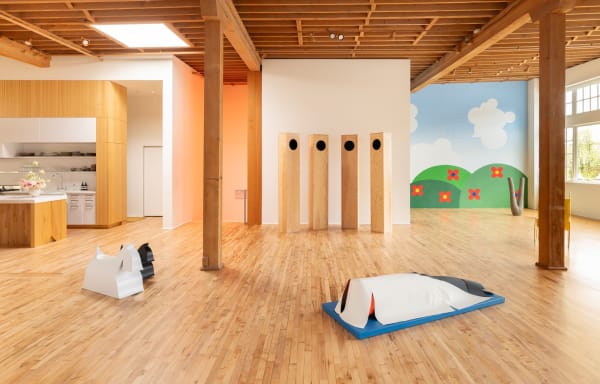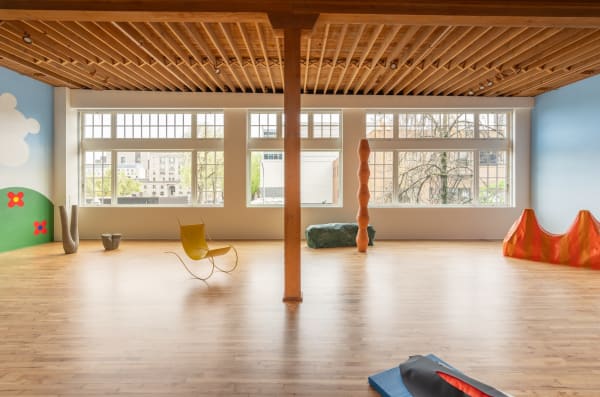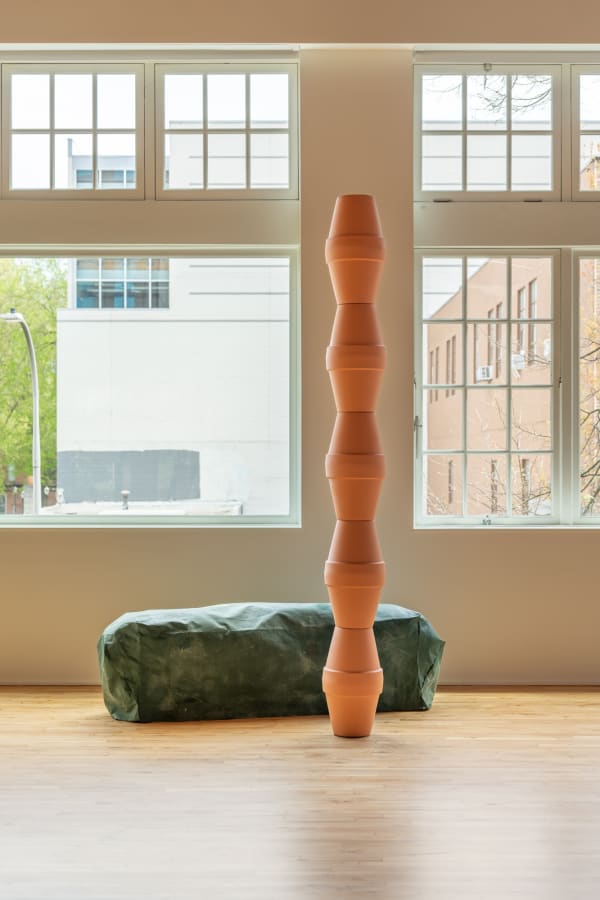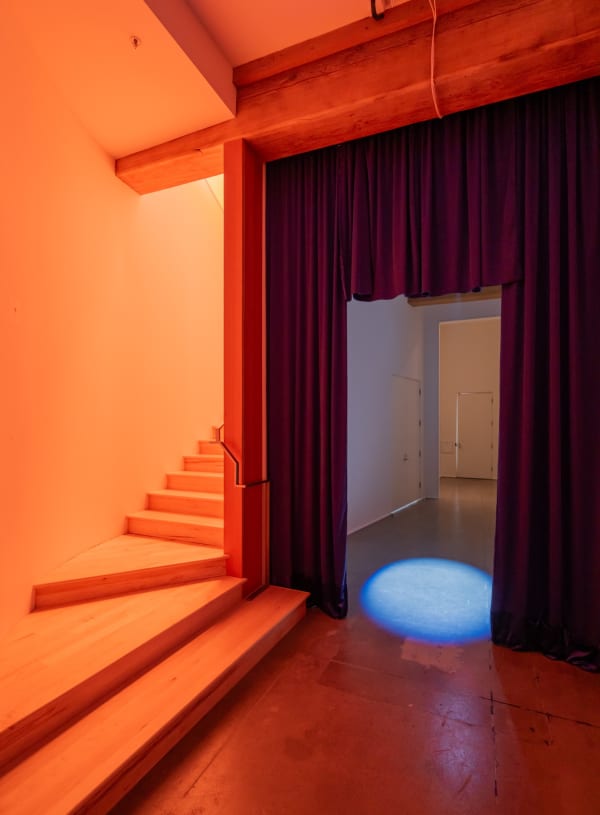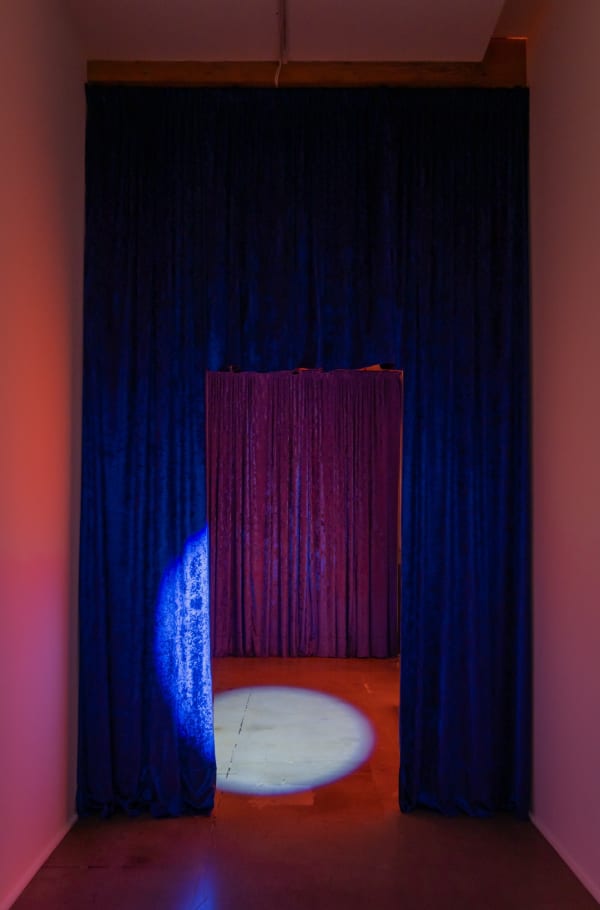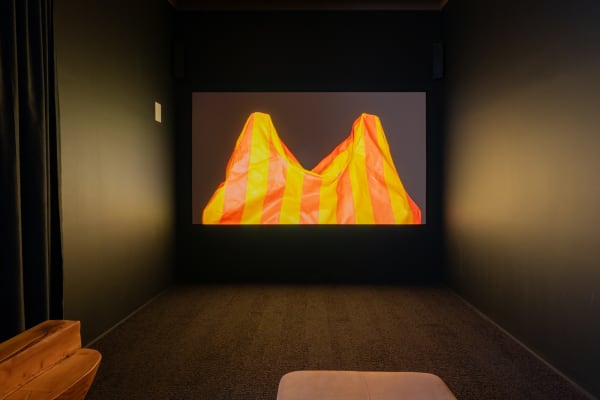Math Bass: Full Body Parentheses: lumber room, Portland
The lumber room presents Full Body Parentheses, a mid-career survey of Math Bass’s sculptural works, accompanied by the artist’s site-specific murals and a selection of small paintings. Best known for their paintings, which iterate on a lexicon of symbols to create a unique language, Bass’s sculptures in Full Body Parentheses animate and complicate those more familiar, flattened forms, creating a resonant, playful world of iconic objects.
Bass has been interested in the intersection between performance and sculpture since they began making sculptures to appear as characters in videos as a student. Seriality, the repetition of forms, and sculpture as character remain crucial themes in their practice.
In this vein of performance, the exhibition begins in a double curtain room with a roving, pre-programmed spotlight. The light searching for the moment before the show begins is a classic performative moment. The stairway that leads up from that room to the main gallery has a tinted skylight that casts a light over the whole space, creating an ephemeral entryway to the show.
The body of work in Full Body Parentheses started over a decade ago with a set of costumes in performances that referenced houses being tented for termites in Los Angeles. The artist saw a mansion being tented as a spectacle of condemnation that seemed to negate the location of the house – to remove its houseness from the landscape. What would happen if there was a body inside, they wondered? The body became a location that could be deleted, disappear from the world, by using this termite tent form. The original video from that first work will be screened in Full Body Parentheses, with a score that uses all impact noises from instruments: a cinder block being smashed on piano keys, a single guitar string strumming, the sound of a sewing machine, a door closing slowly. These are strung together to create a soundtrack, even though the individual elements are not melodic, and the sound functions as one of the directors of the video, suggesting the players’ movements.
The body takes on another role in the ladders and concrete pants and shorts (“Brutal Set”) that comprised the set pieces for a performance originally staged at the Hammer. While the ladder moved bodies through space easily, the concrete jeans were so heavy they seemed to impede motion all together. Inspired by wet concrete spotted by the side of the road in Los Angeles, still in the shape of its absent bag, the artist thought about turning something soft and empty into something hard and solid. Jeans don’t have much of a form until you put them on. The standard staple of the American wardrobe, emptied of meaning and filled with something else.
Next came the metal forms: taking a piece of material and removing a few pieces from it to suggest a body, such as the work “And Its Shadow,” which almost resembles a pair overalls. “Yellow Rocking Chair,” by contrast, takes a familiar form and activates it with thrilling lightness in the space.
“Pot Tower” emerged from a whole body of work where pots played different roles: as support, as ornament, stacked on top of each other unfused. Then for the next iteration, Bass wanted to make a photoshop-like gesture and erase the seams among the pots. The hedge behind it is another ambiguously tarped object, a distressed big green thing, also sack-like. In the case of another work, “Crowd Rehearsal,” nicknamed Flayed Orca, notched and painted canvas loose over a foam mat is meant to look like someone reclining on their side.
Rather more iconic than ambiguous, the “Scottie Dogs” were inspired by Bass’s aunt’s fourth grade ceramic project, from a 1960s craft kit for kids. Bass drew the dog from memory, then had it turned into a sculpture, rendering the memory 3D once again. Americana (and nostalgia) also factor in the apple sculpture, “Elizabeth II,” which stands for both original sin and the famous one on the teacher’s desk. Bass’s mother was a teacher, and apple forms were common in their childhood home, a motif of growing up. There is something so perfect about an apple.
The titular work of the show, “Full Body Parentheses,” also riffs on Americana, remaking a form from a lamp from a thrift store that appeared to be handmade, from the 60s or 70s. Scaling it into something more like the size of a body and less of a domestic object, the form becomes punctuation for the paintings and the body in the gallery. This work frames objects in the room, acts as a threshold, as tall as a standard doorway, at once in proportion with a home and unfamiliar.
Among these brackets and the charged objects in this show – alternately iconic and ambiguous – the body is activated, appears and disappears in space.
